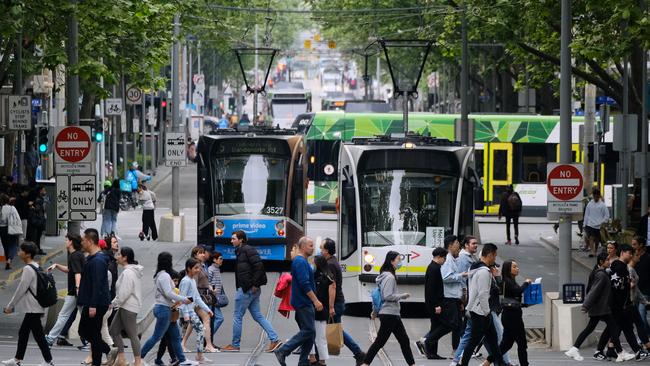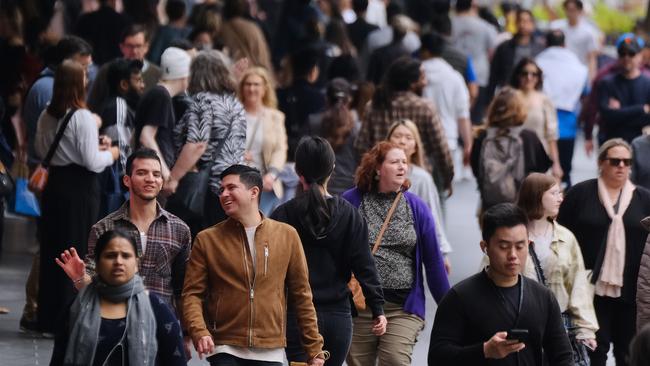Mixed results in Melbourne’s office occupancy rate
One day of the week is gradually getting busier for people working from the office but Melbourne is still well behind other cities in office occupancy.
Victoria
Don't miss out on the headlines from Victoria. Followed categories will be added to My News.
More CBD workers are returning to offices but Melbourne’s occupancy rate still lags behind most other capital cities, says a new report.
Office occupancy reached 57 per cent in November – up from 45 per cent in October – and was the highest level since the start of the pandemic, according to the Property Council of Australia survey.
Melbourne has nearly caught up to Sydney (59 per cent), but is still well short of Perth (80 per cent), Adelaide (74 per cent) and Brisbane (67 per cent).
Property Council Victorian executive director Cath Evans said Melbourne’s increasing occupancy showed the market was normalising amid growing economic activity emerging from the pandemic.

“Every extra office worker in the city supports another five jobs – baristas, retail workers, barbers and hairdressers,” she said.
“It means more coffees sold, more lunchtime shopping trips and more haircuts.”
While there’s been a significant increase in workers returning to corporate offices for at least a few days a week, it’s believed many public sector staff are still staying home and not being pressured to make an appearance.
National Australia Bank’s two CBD towers have reported average weekly occupancy around 40 per cent, rising to 50 per cent on Tuesdays, Wednesdays and Thursdays.
An NAB spokeswoman said most of the bank’s roles required face-to-face connection, and internal surveys showed most staff preferred a mix of home and office working.
“At NAB, this means a blend of 2-3 days a week working from the office, and the rest at home. Some colleagues will spend even more of their time with customers in branches,” she said.
Manager of the 101 Collins St office tower, Peter Calwell, said occupancy was averaging 60 per cent midweek.
“Fridays are becoming a little bit busier because a lot of people are coming in for Christmas lunches and things like that,” he said.

Mr Calwell said businesses wanted their staff in the office at least three days a week.
“But it’s difficult for them to be too dictatorial about that because some people have got used to working from home and actually like it,” he said.
101 Collins St provides popular incentives like free yoga, pilates and boxing, as well as Christmas activations like giftwrapping and prizes.
“We try to make sure that we’ve got things that make people want to come into the office,” Mr Calwell said.
Lord Mayor Sally Capp said November was the busiest month in the city since 2019.
“Pedestrian activity peaked on Saturday November 26, at 126.4 per cent of the pre-pandemic benchmark on Swanston St,” she said.
“All of these trends can give confidence to our small business owners, who have endured two years of disruptions.”




